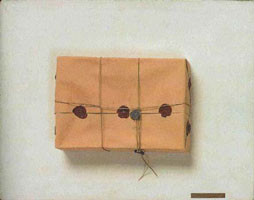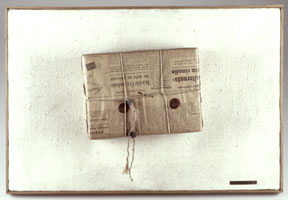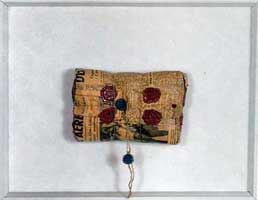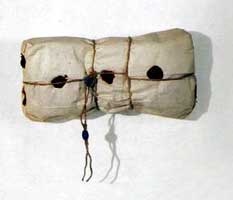Secrets as Artworks
|
|
|
|
|
|
|
||
|
|
|
|
|
|
||
|
|
|
|
|
|
||
|
|
 |
 |

|
 |
Maurice Lemaître
|
Art & Language
|
Secret Painting, 1967
["The content of this painting is invisible; the character and dimension of the content are to be kept permanently secret, known only to the artist."]
|
Stephen Kaltenbach
|
Ray Johnson
Untitled, 1970. [Sealed Box] |
|
Quotes
Plutarch, On Isis and Osiris, § 9 (354 C).
Saint Augustine: Sermons, 51, 4, 5. The more these things seem to be obscured by figurative words, the sweeter they become when they are explained. Saint Augustine: On Christian Doctrine, iv, vii, 15. But in order that manifest truths should not become tiring, they have been covered with a veil, while remaining unchanged, and thus they become the object of desire; being desired, they are in a way made young again; with their youth restored, they enter the spirit gently. Saint Augustine: Letters, 137, V, 18. These things are veiled in figures, in garments as it were, in order that they may exercise the mind of the pious inquirer, and not become cheap for being bare and obvious ... For being remote, they are more ardently desired, and for being desired they are more joyfully discovered. Saint Augustine: Against Lying, X, 24.
[Perhaps nothing more sublime has ever been said or a thought has been expressed more sublimely, than in that inscription on the temple of Isis (Mother Nature): “I am all that is, that has been, and that shall be, and no mortal has raised my veil.”] Immanuel Kant: Kritik der Urteilskraft, 1790. (§ 49, footnote.)
|
Sources
|